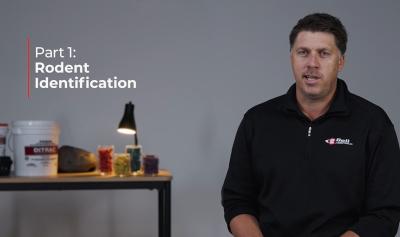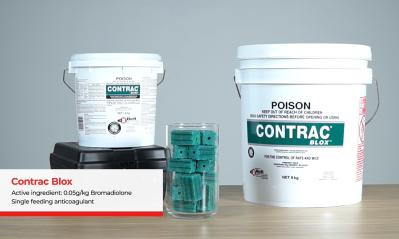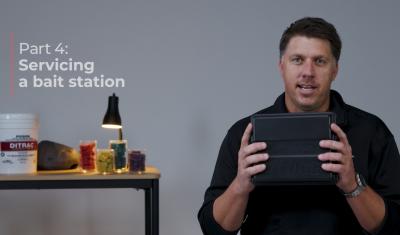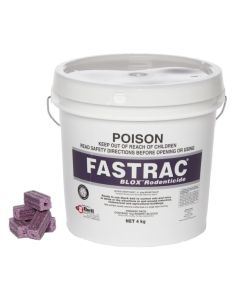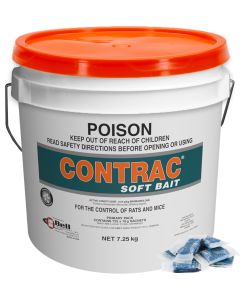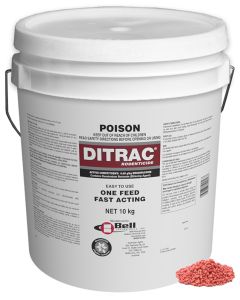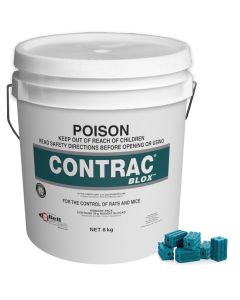How Do Rodenticides Work with Globe and Bell Labs
How do Rodenticides work?
Professional pest technicians need to understand how rodenticides work, the different modes of action, and the forms of bait available. Here is a breakdown of the different rodenticide categories and how they work to get you back to the basics.
Rodenticides are generally placed into 2 different categories: anticoagulant and non-anticoagulant.
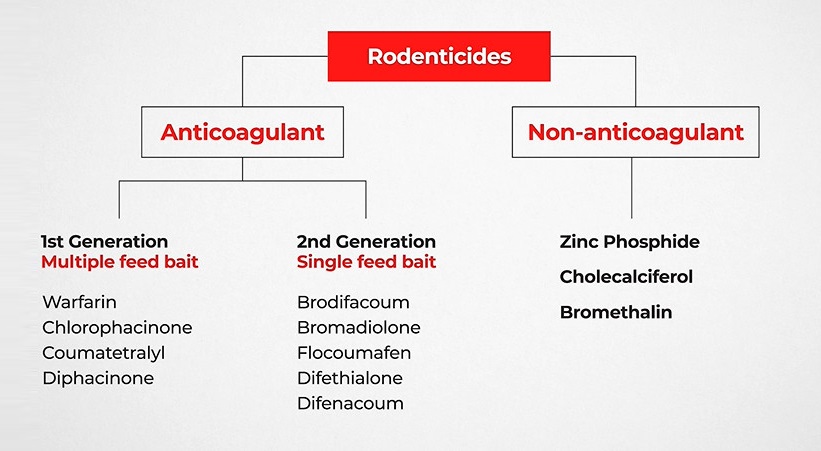
How do anticoagulant rodenticides work?
Anticoagulants work by disrupting the normal blood clotting or coagulation process in the body, so that dosed individuals or animals suffer from uncontrolled bleeding or hemorrhaging, leading to eventual mortality.
Anticoagulants include 1st generation anticoagulants (FGARs) and 2nd Generation anticoagulants (SGARs).
1st Generation Anticoagulants (FGARs) - Multiple Feed Baits
FGAR’s were developed in the 1940’s and 1950’s, they require rodents to consume the bait for several consecutive feedings, over multiple days for delivery of a lethal dose, or termed as multiple feed.
These include the actives Warfarin, chlorophacinone, Coumatetralyl and Diphacinone.
These active ingredients are still available today, but not used as extensively as they once were by the professional pest control industry.
2nd Generation Anticoagulants (SGARs) - Single Feed Baits
The emergence of resistance to some FGARs led to the development of 2nd generation anticoagulants (SGARs), which deliver a lethal dose in a single feed. The first SGARs were developed in the late 1970s. It is important to stress though, no anticoagulants have a stop-feed action, and despite receiving a lethal dose from a single feed (often the first mouthful), rodents will continue to consume bait, or the competing foods for 4-6 days until mortality.
These active ingredients include Brodifacoum, Bromadiolone, Flocumafen, Difethialone, and Difenacoum. These products are the most widely used rodenticides by professional pest managers today.
How do non-anticoagulant rodenticides work?
There are 3 non-anticoagulant active ingredients available in Australia – Cholecalciferol, Bromethalin and Zinc Phosphide.
-
Zinc Phosphide is registered for use in crops and rarely would the professional pest controller encounter it. When consumed, zinc phosphide reacts with the rodent’s stomach acid and releases phosphine gas. It is especially toxic to animals that cannot vomit or regurgitate such as rats, mice and rabbits. It is broadcast spread into crops such as grain, canola, sunflower etc., especially during times of mouse plagues.
-
Cholecalciferol is a sub-acute rodenticide. Also known as vitamin D3, cholecalciferol becomes toxic at high levels in the body by inhibiting the excretion of calcium Increased blood calcium levels act on the small intestine, kidney and bone, leading to cardiac and renal failure, in 3-5 days.
-
Bromethalin is an acuter neurotoxin, and is a brand-new active ingredient in Australia, following its launch in January 2022. The nervous system is the major target of this rodenticide. Bromethalin acts in the liver and prevents cells from producing energy. Without energy, pumps that control water balance fail, and cells swell. As the cells that make up the brain and spinal cord swell, it causes neurological function to be impaired, leading to mortality. Bromethalin has a rapid onset of symptoms, with mortality in as little as 24 hours.
What are the different physical forms available for rodenticides?
Rodenticides come in numerous forms including block baits, soft baits, pellets, liquids and powders.
-
Block baits are typically made of paraffin wax mixed with grains and attractant to increase palatability. Long-lasting, weather-resistant and inexpensive, they are a top choice for both indoor and outdoor usage and feature a centre hole so that they can be secured on rods inside lockable, tamper-resistant bait stations.
-
Soft sachet baits are very popular as they are highly palatable, being free of wax and instead made of fats and oils. While soft baits do not mould, freeze or melt, they can deteriorate more quickly than block baits making them a great choice for an initial clean-out product that can be secured in bait stations before being switched out for block baits for ongoing control and maintenance.
-
Pellet baits are constituted like block baits but in a smaller size. They are most commonly used when baiting rodent burrows due to their increased acceptance by rats and mice as their form replicates nature. These pellets are highly weatherable and palatable however a risk is that the pellets cannot be secured so they may be shifted towards non-target animals in the open, making them unsuited for use in sensitive locations.
-
Liquid rodenticides are very effective in dry conditions or where water is scarce, however being liquid, they are hard to secure and prevent spillage.
-
Contact tracking powders are applied to areas where the rodents are travelling and adhere to their feet and fur where it is then ingested during the grooming process. They are useful in situations where the rodents have a consistent food source and aren’t feeding on baits, however they pose the potential of harming a non-target animal.
Globe Pest Solutions carries an extensive suite of rodent management solutions that span across different rodenticide groups and forms. Browse online to discover the full range.


